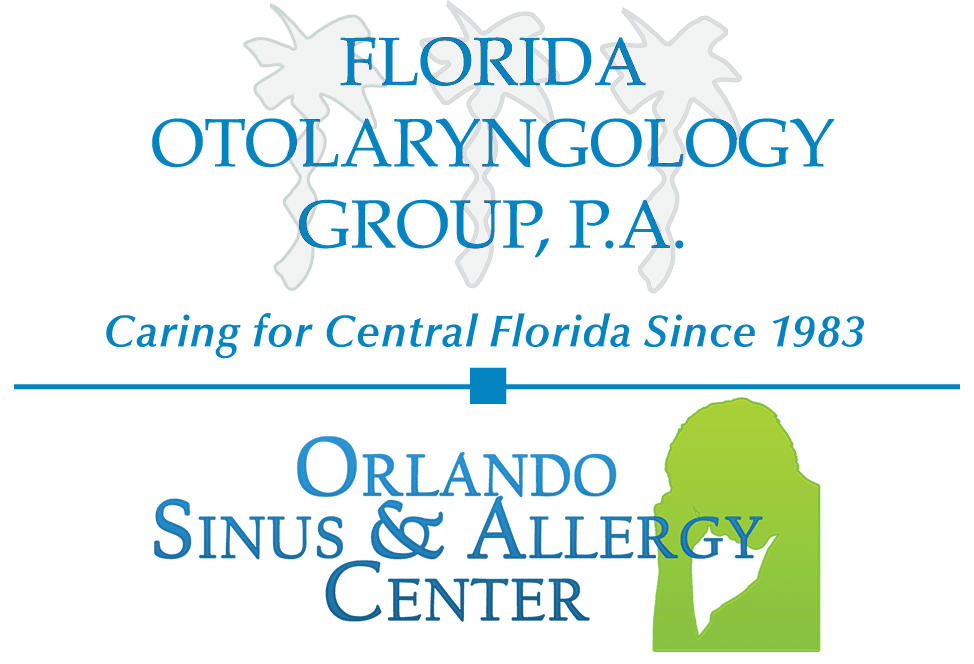Eardrum Repair
An eardrum repair is a surgical procedure used to fix a perforation (hole or tear) in the eardrum. The eardrum (tympanic membrane) is a thin, tightly stretched skin-like tissue that separates your ear canal from the middle ear. When your outer ear funnels sound waves into your ear canal, the purpose of the eardrum is to vibrate. The middle and inner ear will then change these vibrations to nerve signals which your brain interprets as sound. If your eardrum is ruptured, it can’t vibrate properly causing hearing problems.
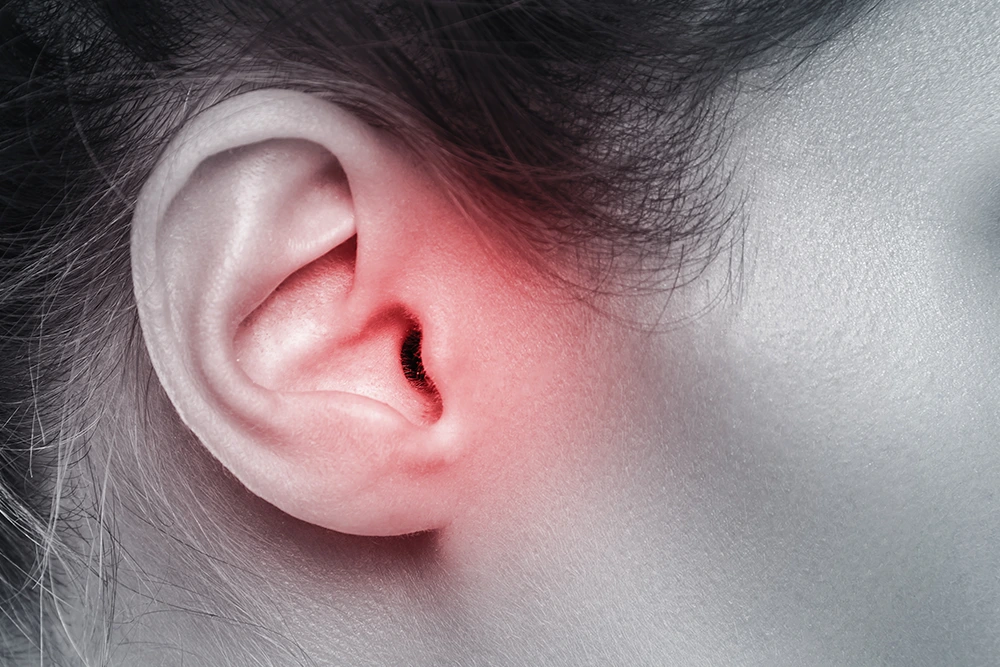
What Can Cause a Perforated Eardrum?
There are several causes for holes or tears in the eardrum. This can range from:
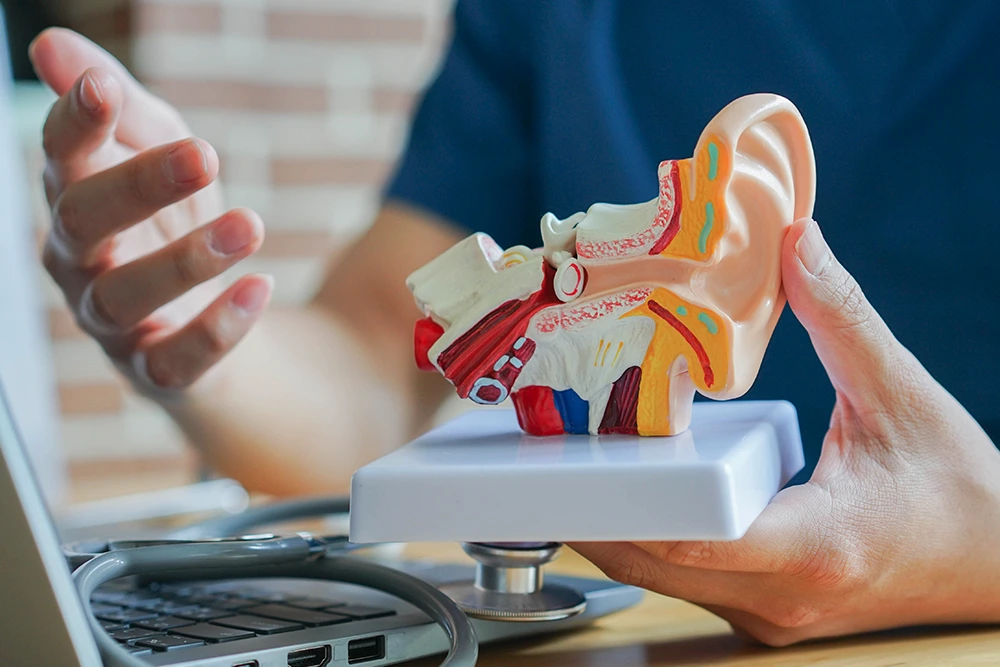
- The use of items that cause damage to the ear canal or eardrum, such as cotton swabs.
- Middle ear infections within the middle or inner ear that cause the eardrum to burst open due to fluid or pus buildup.
- Very loud noises such as explosions can damage the eardrum, due to very strong sound waves.
- Head trauma, either a direct blow to the ear that causes the eardrum to tear, or a severe head injury that breaks bones near the eardrum.
- Sudden pressure changes that rupture the eardrum (barotrauma), such as flying in an airplane, scuba diving, or traveling above sea level.
What Are the Symptoms of an Eardrum Perforation?
If you experience hearing loss, ringing in your ears, nausea or vomiting, spinning sensations (vertigo), bloody or pus-like drainage from the ear canal, mild to severe pain that suddenly decreases, or weak facial muscles, you’re likely to have a perforation in your eardrum. If you suspect this then you should schedule a consultation with one of our ENT specialists to have them look at your inner ear.

How Is an Eardrum Perforation Diagnosed?
One of our ENT specialists will determine whether you have a ruptured eardrum with a visual inspection of the inner ear. Additional tests can be done to determine the cause including:

- Laboratory tests on any discharge from the ear to test for bacterial infection.
- Audiology exam to measure how well you hear varying volumes and pitches.
- A tympanometry test, which determines how well your eardrum responds to slight changes in air pressure. A tympanometer is used for this with an insert in your ear canal
- A tuning fork test, which detects hearing loss. This works by striking two-pronged forks to create sound. Depending on how much of this sound you can hear, determines whether the hearing loss is from a damaged middle ear, or damaged sensors/nerves, or both.
If it is found that you do have an eardrum perforation our ENT specialists will recommend either an eardrum patch, or a tympanoplasty to repair it.
3 Types of Eardrum Surgery Treatment Options
While most ruptured eardrums will heal on their own without treatment in just a few weeks, sometimes this isn’t always the case.
- 1. Myringoplasty. If you have a relatively small hole or tear in your eardrum, one of our ENT specialists will patch the hole with a gel or paper-like tissue. This procedure doesn’t take very long, anywhere from 15-30-minutes, and can be done under local anesthesia.
- 2. Tympanoplasty. If an eardrum patch is not effective, the hole in the eardrum is too large, or you keep having chronic ear infections that don’t respond to antibiotics, then a tympanoplasty is recommended. With this procedure, one of our ENT specialists will remove any scar tissue or excess tissue within the middle ear, then take a small piece of your own tissue (such as a muscle covering called fascia) and graft it onto your eardrum to close the hole. This surgical procedure can be done through the ear canal or by making an incision behind the ear. Tympanoplasty is an outpatient procedure, takes approximately 1-2 hours, and requires general anesthesia.
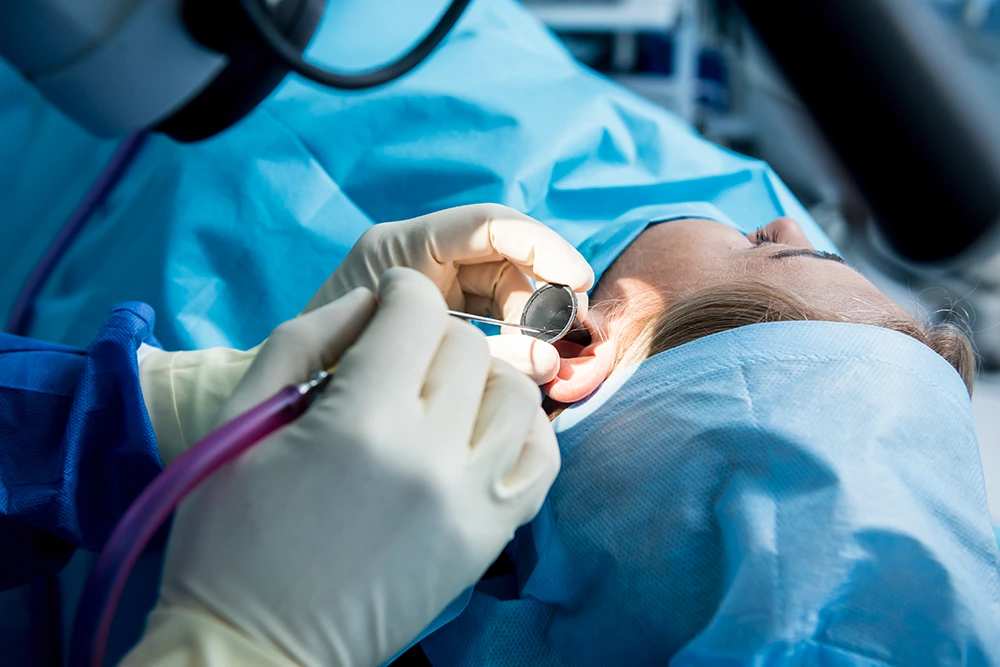
- 3. Ossiculoplasty. In severe cases where your eardrum is perforated and the middle ear bones (ossicles) are damaged either from trauma or ear infections, then an ossiculoplasty is recommended. Your middle ear bones will be replaced using prosthetic implants and your eardrum is repaired.
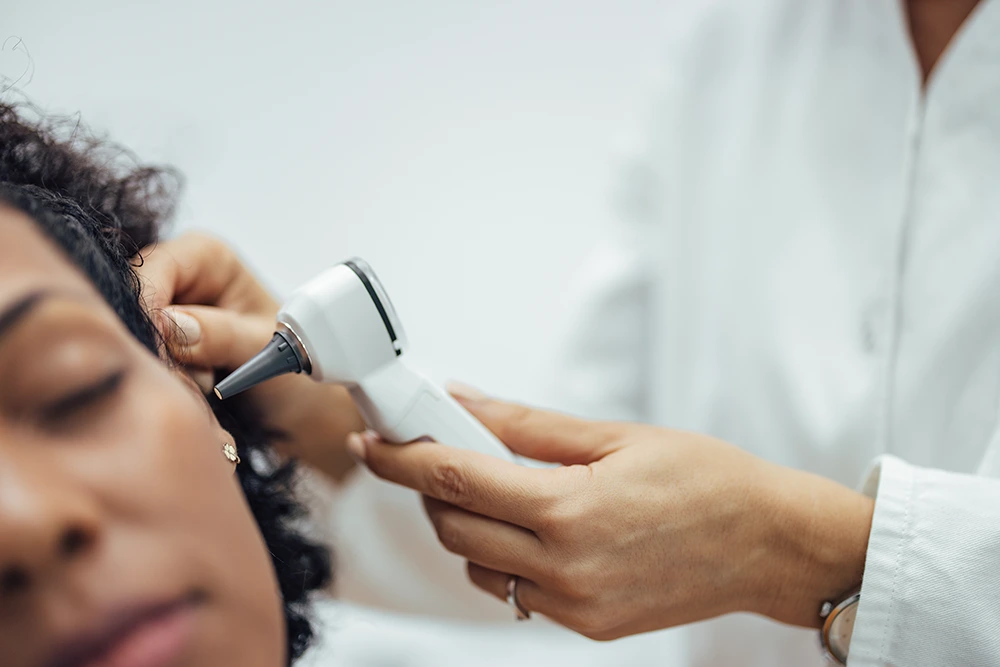
Pre-Surgery Prep for an Eardrum Repair
During your appointment with us, we will ask you about any medications or supplements you are taking, and whether you have allergies to certain medications that may be used during the surgical procedure. We ask that you avoid eating or drinking anything past midnight on the day prior to surgery, as this reduces your risk of complications from anesthesia.
What Does Outlook and Recovery Look Like After Eardrum Repair?
To protect the ear after an eardrum repair packing will be placed in the ear, and it will need to stay there for the first 5-7 days. In some cases, you may be given a dressing that goes over top of the ear. If you are prescribed ear drops, you can remove the packing to apply them, but do not put anything else in the ear, and always replace the dressing.
We ask that you do not “pop” your ears, blow your nose, swim, travel by air, or allow water to get into the ear. During bathing time, wear a shower cap to prevent water from getting into the ears or drenching your bandages.
Any mild drainage that you have should be gently wiped away.
The outlook for eardrum repair surgery is very successful with the majority of patients recovering with no complications.


Have Questions About Eardrum Repair Surgery?
If you are currently suffering from the symptoms of a perforated eardrum, please get in touch immediately at 407-677-0099. Our ENT specialists are happy to take a look and get you on the road to recovery.
Painful ear infections are a rite of passage for children—by the age of five, nearly every child has experienced at least one episode. Most ear infections either resolve on their own (viral) or are effectively treated by antibiotics (bacterial). But sometimes, ear infections and/or fluid in the middle ear may become a chronic problem leading to other issues such as hearing loss, behavior and speech problems. In these cases, insertion of an ear tube by an otolaryngologist (ear, nose and throat specialist) may be considered.

